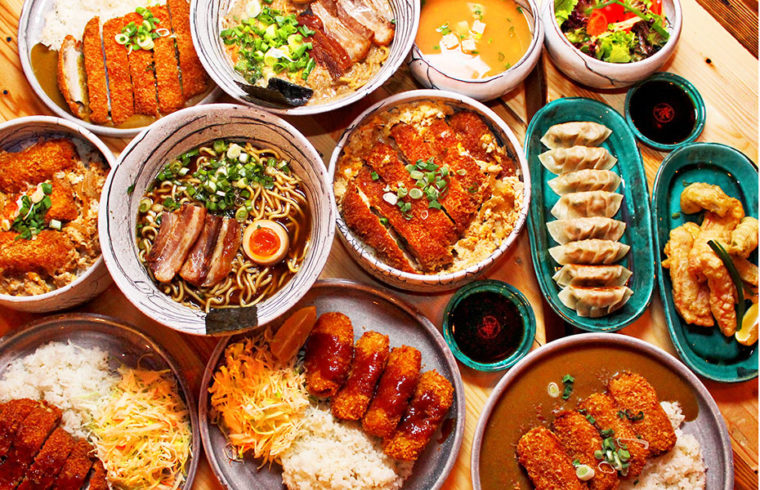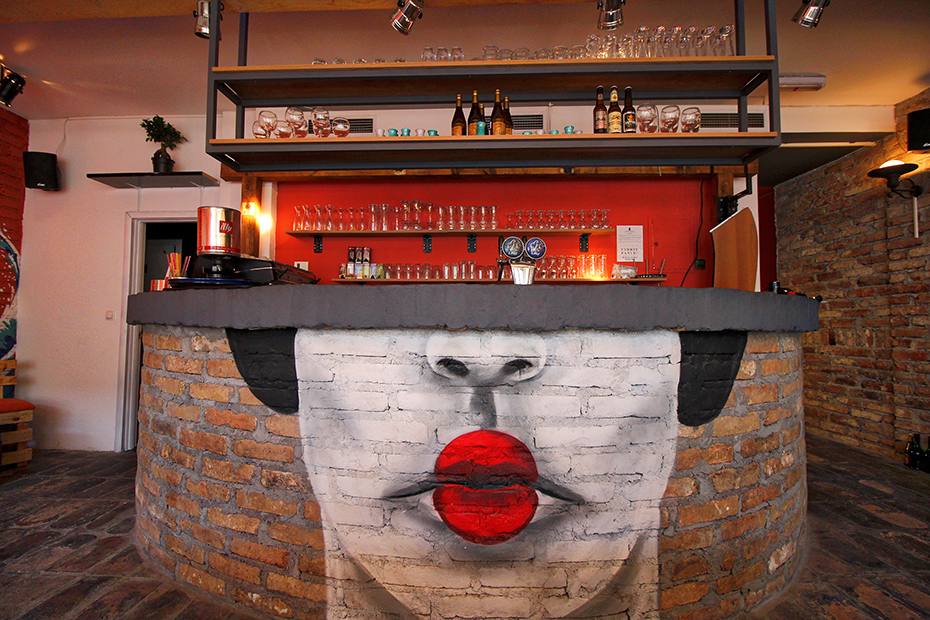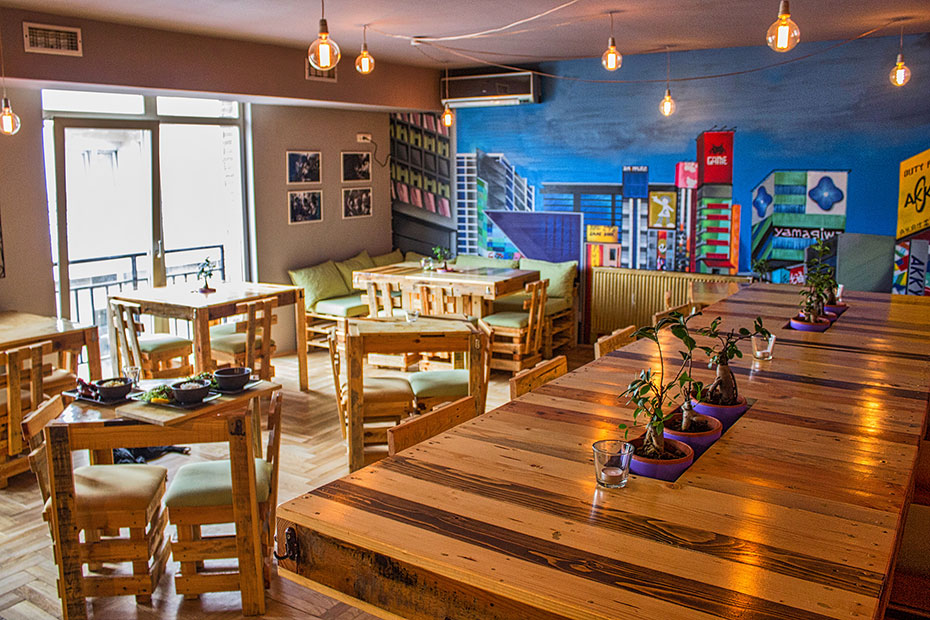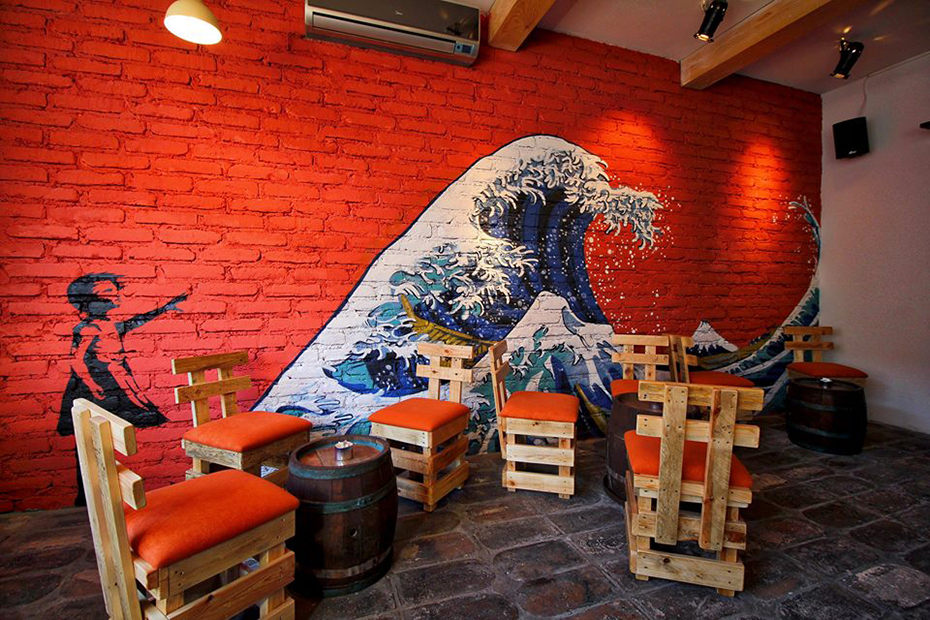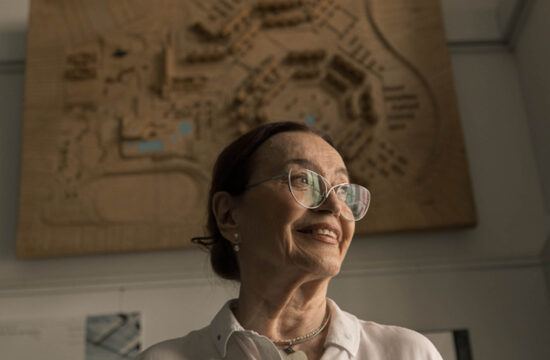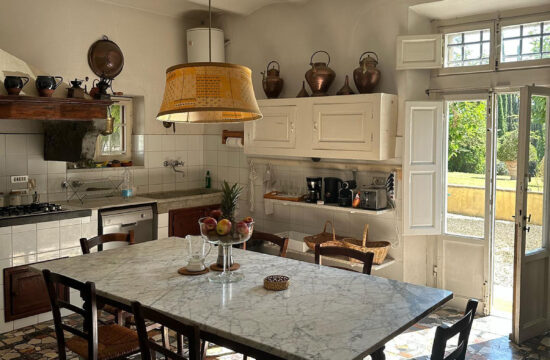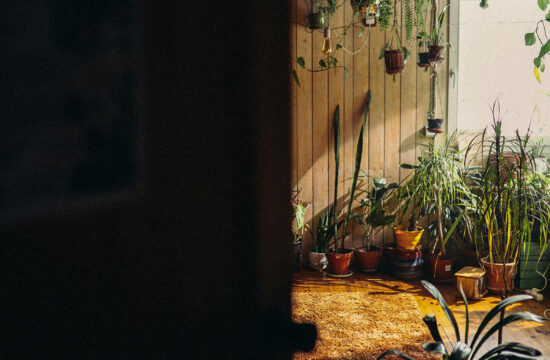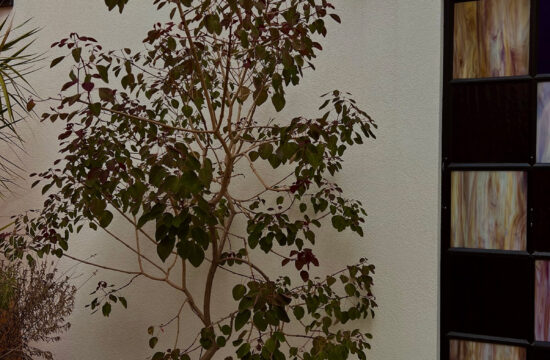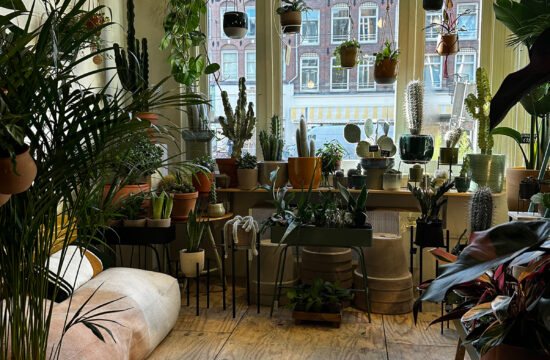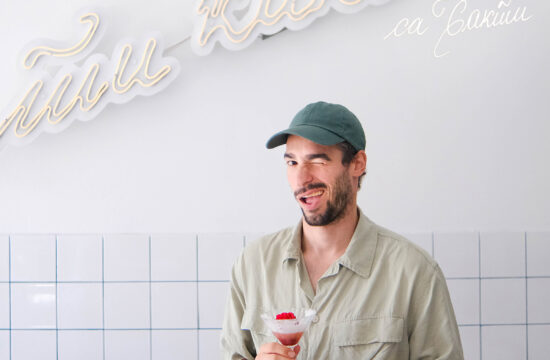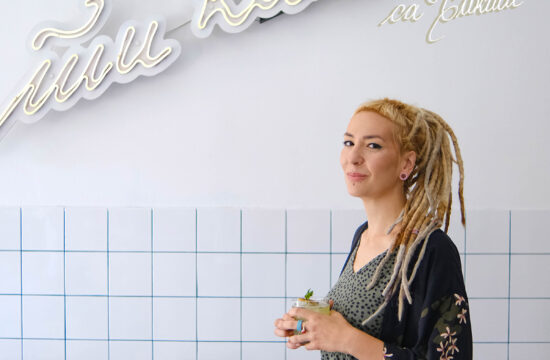Veliko je zadovoljstvo biti gost jednog od trenutno najprijatnijih mesta u Beogradu, restoranu japanske kuhinje – Marukoshi. Sa vlasnikom ovog opuštajućeg, šarmantnog mesta u samom srcu grada, mladim gospodinom Košikavom, razgovarali smo o njegovim počecima, ljubavi prema Beogradu, tradicionalnoj japanskoj, ali i srpskoj kuhinji. Uživajte u nastavku našeg intervjua, ali i u savršenim zalogajima, odličnoj muzici i ambijentu ovog divnog mesta koje vam iz sveg srca preporučujemo!
ISPRIČAJTE NAM KAKO STE SE ODLUČILI DA OTVORITE RESTORAN BAŠ U BEOGRADU?
Prvi put sam posetio Beograd 2006. godine u okviru istraživačkog programa o balkanskoj politici i istoriji. Program se zapravo odigravao u Zagrebu, ali smo posetili Beograd kako bismo intervjuisali pojedine novinare i nevladine predstavnike. Već prvog dana sam se zaljubio u Beograd, energiju i ljude ovog grada. Ostao sam još tri meseca kako bih radio u nevladinoj organizaciji Inicijativa mladih za ljudska prava. Ponovo sam se vratio 2011. u okviru jedne saradnje, pa opet 2012. kako bih podržao rad mirovne organizacije. Između ova tri iskustva, kako sam radio u okvirima Ujedinjenih nacija na Srednjem istoku, Beograd je uvek bio mesto kojem bih se vratio kako bih obnovio zdrav razum, napunio baterije i sreo se sa mnogo prijatelja i poznanika koje sam tako lako stekao u ovoj gostoprimljivoj zemlji.
Budući da sam radio u ljudskom sektoru sedam godina, dugo vremena sam želeo da osnujem sopstvenu organizaciju koja bi se bavila radom na razvoju zajednice. Seleći se iz jedne zemlje u drugu na svakih godinu-dve, Beograd je postao grad koji sam najbolje upoznao tokom proteklih deset godina. Baš sam se osećao kao kod kuće, dok je svako sletanje na aerodrom Nikola Tesla izmamljivalo toliko poznati osmeh na moje lice. Srbija je zemlja u kojoj ću pokušati da ostvarim svoje ambicije. Premda, vođenje organizacije iziskuje novac, dok neprofitne organizacije po definiciji ne generišu prihod kako bi same sebe izdržavale i bivale nezavisne. Sa ušteđevinom koju sam imao, pomislio sam kako bih mogao da napravim nekakav posao koji bi podržao buduću organizaciju i da bi to zapravo bio najpametniji potez.
Dugo vremena, voleo sam hranu i kuvanje. Gledati ljude kako uživaju u ukusima i mirisima, posmatrajući kako se njihova lica ozare nakon prijatnog obroka, pruža najveći osećaj zadovoljstva koje se može osetiti. Osećanje da si baš ti odgovoran za to, menja igru. Beograd i Srbija poseduju neverovatnu hranu i izvanrednu proizvodnju svežih namirnica, ali ono što (još uvek) nema je isto toliko neverovatna raznovrsnost. Restorani koji nude inostranu kuhinju su obično previše skupi, ili nisu autentični – ili oboje. Prvo sam razmotrio koji posao bih mogao da obavljam sa velikim poznavanjem, znanjem i strašću, a potom sam razmišljao o onome što predstavlja veliki marketinški jaz, a to je atraktivna i pristupačna inostrana kuhinja.
Moja prva strast prema hrani je zapravo bila prema iranskoj, odnosno persijskoj. Složena i sofisticirana mešavina suptilnih začina i ukusa koji je karakterišu, uključuje meso, povrće i voće u okvirima toplih čorbastih jela i predstavlja privilegiju u kojoj će ljudi širom sveta tek uživati. Opet, budući da sam bio nov u ovom poslu, opredelio sam se za kuhinju na kojoj sam odrastao i za koju sam bio siguran da bi Srbi mogli sa njom da se srode, uživaju i smelo se upuste bez bojazni da će se udaljiti od popularnih ukusa koji karakterišu srpsku paletu. Domaća japanska kuhinja se jednostavnije i brže priprema, i ona zapravo zahteva manje uvezenih namirnica od kompleksnijih začina potrebnih za oživljavanje persijske hrane.
JAPANSKA KUHINJA JE VEOMA POPULARNA I INTERESANTNA LJUDIMA ŠIROM SVETA. ŠTA JE PO VAŠEM MIŠLJENJU TO ŠTO JE ČINI JEDINSTVENOM I PREPOZNATLJIVOM?
Kada neko pomisli na japansku kuhinju, posebno u Srbiji, prvo što mu padne na pamet jeste suši. Budući da Japanci jedu suši samo povremeno i najčešće u izlascima, učinilo mi se da bi bilo dobro da pokušam i preorijentišem dominantne sterotipe o tome šta japanski narod zaista jede na dnevnoj bazi. U Marukoshiju se uglavnom služe jela sa svinjetinom, govedinom i piletinom sa različitim
vrstama rezanaca i pirinča, zajedno sa japanskim karijem – i predstavlja veliki deo onoga što se u Japanu dnevno konzumira. U samom Japanu, svaka kategorija hrane koja se služi u Marukoshiju – ramen, udon, gjoza i kari (od kare na jap.) – obično imaju sopstvene specijalizovane restorane. Ova jela su neverovatno popularna u velikim metropolama Zapadne Evrope, a posebno u SAD, ali i u ovim mestima su restorani takođe specijalizovani za samo pojedina od navedenih jela. Premda je ova vrsta hrane malo poznata u Srbiji, mi u Marukoshiju smo želeli da pružimo Srbima mogućnost da okuse raznovrsnost najboljih domaćih jela Japana i uvide koliko zapravo ima sličnosti sa tradicionalnom srpskom kuhinjom. Domaća i tradicionalna jela širom sveta su obično ona koja su se razvila po selima i u farmerskim okruženjima i po definiciji su jednostavna, sa sastojcima koji se lako nalaze, poput svinjetine, govedine, piletine, standardnog povrća i brašna, koji se mogu naći u skoro svim zemljama sveta. Ovo je svakako slučaj sa Srbijom, tako da 90% namirnica koje koristimo u pripremi naše hrane, mogu se naći u gotovo svim gradovima i selima u Srbiji. Način kako pripremamo jela se razlikuje, a tih 10% namirnica koje nabavljamo izvan Srbije mogu biti jedina barijera u pripremi istih ovih jela u vašim domovima. Pored toga, ova činjenica nam dozvoljava da naša hrana bude pristupačna i da je serviramo u tzv. “srpskim porcijama”. Dodajte još samo malo dobre muzike i neopterećujući ambijent i Srbija je dobila svoju prvu i jedinu “japansku kafanu”.
KAŽITE NAM KAKAV JE KONCEPT VAŠEG RESTORANA? KO JE BIO ZADUŽEN ZA OSMIŠLJAVANJE ENTERIJERA?
Dizajn restorana je bio inspirisan njegovim okruženjem. Donji Dorćol je industrijski, urbani deo grada i naš komšiluk karakteriše jedno od najvećih autobuskih stajališta u gradu. Po mom mišljenju, ovo je značilo otklon od japanskih stereotipa u vidu dodavanja detalja poput tatami (trščanih) zidova i podova, ili visećih fenjera ispred vrata u enterijer restorana. Beograd je generalno moderan, ali šljunkovit grad, a japanskoj hrani nije neophodno da ima restoran koji će hraniti ljudske predrasude o tome kako jedan japanski restoran treba da izgleda. Tokio karakterišu različiti i inovativni restorani koji služe tradicionalnu hranu u intenzivnim varijetetima stilova, od ultramodernog, do umetničkog i boemskog. Barselona poseduje japanski restoran sa neobičnim imenom “Mosquito” (komarac) koji služi sličnu hranu, a uređen je u stilu pariskog Maraise vinskog distrikta. Mi smo tražili mesto koje se neće prvo doživljavati kao japanski restoran, već kao moderno i opuštajuće mesto u koje će ljudi dolaziti da se druže, slušaju dobru muziku, pa tek onda jedu dobru hranu po pristupačnoj ceni.
Brojne ideje vezane za dizajn sam zapravo pronašao na Guglu i Pinterestu. Mnoge od njih su takođe proizašle iz toga da se držimo planiranog budžeta i predviđenih troškova. Restoran se finansira isključivo iz moje (ograničene) ušteđevine, tako da sam morao da budem i pomalo kreativan kada sam radio na tome. Pomoć sam takođe dobio od odličnog srpskog majstora tetoviranja i uličnog umetnika Save Dimitrijevića, koji zapravo gaji veliku strast prema slikama u japanskom jukio-e stilu. On je uradio celokupni umetnički rad koji je sada već postao većinski identitet restorana. Ukoliko vam je potreban bilo kakav sličan rad ove vrste, čak i neverovatna tetovaža, preporučujem njega. Mlad je, strastven i što je najvažnije, talentovan tip. Dame, pored ovoga se takođe bavi i modelingom.
KOJI JE VAŠ RECEPT ZA OSVAJANJE GOSTIJU? POSTOJE LI NEKA ZLATNA PRAVILA KOJIH SE PRIDRŽAVATE?
Naš recept za osvajanje gostiju je jednostavan – odlična hrana, odlična usluga, dobra muzika da produbi iskustvo, a ono što ide pre svega je doslednost. Otac jednog mog dobrog prijatelja, uspešni biznismen u Australiji mi je jednom rekao: “Nikada nemoj da žrtvuješ kvalitet svog proizvoda. Ako imaš odličan proizvod, on će se sam prodavati”. Ovaj savet je prilično bolno pratiti, jer zahteva sate i sate konstantne pažnje i nažalost, manjak sna, ali na kraju ukoliko imate proizvod sa kojim ste zadovoljni, ne treba uopšte da vas brine da li će se drugima dopasti. Naravno, konstantno se trudimo da napredujemo. Nijedna hrana nije savršena i uvek postoje tehnike i metode kojima se može razviti i poboljšati ukus, verodostojnost, kao i tekstura određene hrane. Ovo je posebno slučaj sa ramen rezancima. Ovo je zaista mnogo teže pitanje nego što bismo isprva pomislili i ja sam lično proveo mnogo vremena kako bih ga savladao. Volim da mislim da je naša hrana iz dana u dan sve bolja. Pomaže to što je veliki izazov napraviti određene prozvode u kućnoj varijanti, sastojke koje bi restorani u Japanu vrlo jednostavno mogli nabaviti po povoljnijim cenama, pritom visokog kvaliteta. To nas motiviše da konstantno inoviramo i guramo sami sebe da idemo još dalje, čak i više nego što to rade dobri restorani u Tokiju.
MNOGO LJUDI SMATRA JAPANSKE SPECIJALITETE I SLATKIŠE JEDINSTVENIM ZBOG INTERESANTNOG SPOJA VIŠE RAZLIČITIH UKUSA. KOJI JE VAŠ SPECIJALITET KUĆE?
Neka od jela koja mi služimo se mogu naći i u nekoliko drugih restorana u Beogradu. Volim da mislim da se naš kvalitet i autentičnost što se jela tiče ne mogu porediti ni sa jednim drugim u gradu, ali to naravno ostaje na našim gostima da presude. Među restoranima koji služe sličnu hranu, naše cene su takođe znatno niže, a naši rezanci za ramen su jedinstveni na nivou zemlje, pa čak i regiona. Originalna ramen rezanca se ne uvoze u Srbiji i najbliže mesto u kojem možete pronaći prava ramen rezanca je Budimpešta, u kojoj postoje tri takva restorana.
Što se tiče poređenja japanskog kvaliteta ukusa i teksture supe i rezanaca, smeo bih da kažem da se naša ne mogu porediti ni sa Londonom, a ni sa Moskvom. Od ramen entuzijasta koji su obedovali u Londonu, Njujorku i Tokiju, čuo sam čak da su naša bolja, što za mene predstavlja veliki kompliment. Ipak su to tržišta bogate konkurencije koja karakteriše raznovrsnost u ponudi hrane.
Mi trenutno posedujemo tri varijeteta ramena – Šio (baziran na soli), Šjoju (baziran na soja sosu) i Miso (baziran na misou). Miso ramen ima i svoju vegansku verziju koja je takođe dostupna. Takođe, posedujemo i hladne verzije u mnogo ukusa za vruće dane, kada bi vruća supa bila previše.
Još jedan jedinstven ukus na koji su se gosti prilično navukli su naša jela od japanskog karija. Ovo takođe nema u ponudi nigde drugo u gradu, a predivna stvar u vezi sa japanskim karijem je ta što čak i oni koji nisu ljubitelji začinjene hrane uživaju u njemu!
Poseduje vrlo prijatan i blag ukus i verovatno je među najpopularnijom hranom među Japancima. Možete naći jela sa japanskim karijem na skoro svakoj stanici metroa u Tokiju. Probajte, verujem da ćete se i vi navući!
SIGURNO STE I SAMI PROBALI NEKE OD TRADICIONALNIH SRPSKIH SPECIJALITETA. DA LI POSTOJI NEKO KOJE VAM SE POSEBNO DOPADA I DA LI STE MOŽDA POKUŠALI DA NAPRAVITE NEKI ZANIMLJIV SPOJ JAPANSKE I SRPSKE KUHINJE?
Sarma, sarma i još sarme. Dajte mi sve! Jedinu žal koju imam za srpskom hranom je ta što se sarma od kupusa ne služi toliko tokom letnjih dana… Voleo bih da je jedem tokom cele godine, jer ima toliko prijatan i pun ukus, dok je opet prilično lagana za stomak. Kao ljubitelj mesa, naravno da volim većinu jela iz srpske kuhinje. Ovde su prehrambeni proizvodi uglavnom sveži i organski, a način na koji se kombinuju je jednostavan i sve je vrlo ukusno. Sada Beogradu samo još fali raznovrsnost kuhinja u okviru ponuda restorana, jer osim toga je prilično gurmanski grad.
KAKVA PIĆA SLUŽITE UZ VAŠA JELA? DA LI SU I ONA TRADICIONALNO JAPANSKA I DA LI PRAKTIKUJETE NEKI POSEBAN RITUAL PRILIKOM POSLUŽIVANJA?
Naša najpopularnija pića su najverovatnije neka od japanskih piva – Asahi, Kirin i Saporo. Ona su lagana i osvežavajuća i čine veliki procenat domaćeg tržišta piva u Japanu. Tu je takođe i japanski sake, ili pirinčano vino, mača (na bazi praha zelenog čaja), topla i hladna pića, kao i senča, tradicionalni japanski zeleni čaj. Zeleni čaj bi u principu trebao da bude poslužen u okviru dužeg i pomalo komplikovanog rituala, ali mi namerno nismo tradicionalni u tom smislu služenja i prezentovanja čaja.
KAKVE SU VAŠE DALJE AMBICIJE I PLANOVI?
Vrlo dobro pitanje, i vrlo važno pitanje za mene lično. Kao što sam pomenuo na početku intervjua, voleo bih da pokrenem organizaciju za razvoj zajednice u Beogradu. Kroz rad u okvirima UN-a i raznih drugih organizacija, počeo sam da verujem da je potrebno uključiti više ljudi u ovo pitanje. Verujem da se humanitarni ciljevi mogu brže dostići ako se više uključi javnost. Mislim da bi koncept kakav recimo ima Vikipedija ili Jutjub, u smislu da svako da svoj mali doprinos, bio prava stvar. Tako ćete u rukama imati veliki rezervoar veština, izvora i dobre volje za rešavanje brojnih problema sa kojima se suočava naše društvo. U tom smislu će profit Marukoshija ići ka postizanju razvojnih ciljeva. Restoran je takođe prigodno mesto za početničke sastanke i održavanje kolektivnih akcija. Nadam se da će ovaj restoran postati središte organizacije kada bude osnovana i pokrenuta. Naravno, restoran je još uvek mlad i sve moje vreme je usmereno na to da sve ide efikasno i da kvalitet bude na nivou sa kojim sam zadovoljan. Svemu ovome će naravno trebati mnogo vremena, ali polako se približavamo cilju. Svakako ću vas izveštavati o napretku. Veliko hvala na ovoj prilici i tome što smo imali prilike da malo više razgovaramo. Vaš časopis je vrlo autentičan i visokog kvaliteta, tako da i ja vama želim sve najbolje u onome što radite.
ENGLISH
Ryo Koshikawa Ragland – Our main recipe is consistency
It is a great pleasure to be a guest of one of the more pleasant places in Belgrade – restaurant of the authentic Japanese cuisine – Marukoshi. With the owner of this charming and relaxing place, we talked of his beginnings, future plans, love for Belgrade, traditional Japanese and Serbian cuisine.
Tell us about how did you decide to open a restaurant in Belgrade?
I first came to Belgrade in 2006 while undertaking a research program on Balkan politics and history. The program was based in Zagreb but we came to Belgrade for five days to interview some journalists and NGO representatives. From Day One I fell in love with Belgrade and the energy and people in this city. I stayed for three more months to work with a non-governmental organization here called Youth Initiative for Human Rights (Inicijativa mladih za ljudska prava). I came back again here in 2011 doing a Fellowship with a Belgrade-based think tank and then returned again in 2012 to support the work of a peace-building organization called Trans Conflict. In between these experiences, as I worked for the United Nations in the Middle East, Belgrade was always a place I would come back to visit to regain my sanity, recharge my batteries and meet the many friends and acquaintances that had become so easy to make in this welcoming city.
Having worked in the humanitarian sector for seven years, I had wanted for a long time to start my own organization to do community development work. Moving from country to country every year or two, Belgrade had by this time become the city I was most familiar with over the past ten years. It felt increasingly like home, and landing in Nikola Tesla Airport always brings a smile of pleasant familiarity to my face. Serbia is where I would try to realize my ambitions. But running an organization costs money, and non-profit organisations by definition don’t generate revenue to sustain themselves independently. With the savings I had, I thought opening up a business that could support this future organization would be the smartest move.
For a long time, I have loved food and cooking. Watching people enjoy new tastes and smells, seeing people’s faces light up after enjoying a hearty meal is one of the most satisfying sensations one can have. Knowing that you are responsible for that is a game-changer. Belgrade and Serbia have amazing food and amazing fresh produce, but what it does not (yet) have is an amazing and accessible variety of food. Restaurants serving foreign cuisines are usually overpriced or inauthentic or both. In opening up a business, I considered first what is a business I could be passionate and knowledgeable about, and secondly what is a strong market gap—affordable and attractive foreign cuisine.
My first passion for food is actually Iranian (Persian) food. The complex and sophisticated blend of subtle spices and flavors that characterize it, including the mixing of meat, vegetables and fruit into warm stews is a benefit many people around the world have yet to enjoy. Being new to this business, however, I opted for a cuisine that I had grown up around and that I firmly believe Serbians can relate to and enjoy without venturing too far from the popular tastes that characterize the Serbian palette. Homemade Japanese food is also easier and faster to prepare and put together, and in fact requires less imported ingredients than the complex spices that give life to Persian food.
The Japanese cuisine is very interesting and popular among people around the world. What is your opinion on what makes it so unique and recognizable?
When one hears about “Japanese cuisine”, especially in Serbia, the first word that comes to mind is sushi. Considering that Japanese people eat sushi only occasionally, and most often as “going-out food”, it felt right to try and reorient the stereotypes that are predominant about what Japanese people actually eat on a daily basis. The food served in Marukoshi—mostly pork, beef and chicken dishes with various types of noodles and rice, as well as Japanese curry—make up a large portion of the Japanese daily intake. In Japan itself, each of the categories of food served at Marukoshi—ramen, udon, gyoza and curry (or “kare” in Japanese)—usually has their own specialized restaurants. These meals are incredibly popular in large metropolitan cities in western Europe and especially the United States and in these places, too, restaurants usually specialize in large varieties of only one of these dishes. However, as this food is little known in Serbia, we at Marukoshi wanted to give Serbians the opportunity to sample a variety of Japan’s best known homemade foods and for them to see how similar it is to homemade Serbian food. Homemade or traditional foods around the world—usually meals developed within villages and in farm environments—by definition use simple, easy-to-find ingredients such as pork, beef, chicken, standard vegetables and rice and flour. These ingredients can all be found in abundance in almost any countryside around the world. This is certainly the case in Serbia and in this respect, 90% of the ingredients that go into our food can be found in almost any town or village in Serbia. The way we put it together, of course, differs, and that 10% of imported ingredients can be a barrier to making them at your home in Belgrade. That aside, this allows us to make the food affordable and serve it in what I call “Serbian portions”. Add to the food some good music and a laid back environment, and Serbia has it’s first and only “Japanese kafana”.
Tell us about the concept of your restaurant. Who was in charge of designing the interior?
The design concept of the restaurant was found in its surroundings. Lower Dorćol is an industrial, urban quarter of the city and our neighborhood features one of the biggest bus depots in the city. To me this ruled out stuffing the restaurant with Japanese stereotypes such as tatami (reed) walls and floors or hanging lanterns outside of the door. Belgrade in general is a trendy but gritty city, and Japanese food doesn’t necessitate having a restaurant that fulfills people’s preconceptions about what a Japanese restaurant should look like. Tokyo features a diverse and innovative collection of restaurants that serve traditional food in an intense variety of styles, from ultramodern, to artsy and bohemian. Barcelona sports a Japanese restaurant with the odd name of “Mosquito” that serves similar food and is done in the style of a Paris Marais-district winery. Thus we sought to build a venue that is not first a Japanese restaurant, but first a trendy and relaxed place where people want to hang out, listen to good music, and then only to eat great food at an affordable price.
I took a lot of design ideas actually just from Google and Pinterest. Many of them also came out of a need to conserve costs. The restaurant is funded purely from my own (limited) savings, and thus I had to be a bit creative about how I went about it. I also got the help of an excellent Serbian tattooist and street artist, Sava Dimitrijevic, who actually has a strong passion for Japanese yukio-e style paintings. He did all of the artwork that has now become much of the identity of the restaurant. If you need any such artwork done or even an awesome tattoo, I strongly recommend him. He is young, passionate and importantly very talented guy. Ladies, he also does some male modeling on the side 🙂
What is your recipe for winning over your guests? Are there any golden rules that you follow?
Our recipe for winning over guests is simple: great food, great service, good music to enhance the experience, and underlining all of this: consistency. The father of one of my good friends, a successful businessman in Australia once told me: never sacrifice the quality of your product. If you build a great product, it will sell itself. This is painstaking advice to follow and requires hours and hours of constant attention and, unfortunately, sleep loss, but in the end if you have a product that you’re happy with, you don’t need to worry about if others will like it. Of course, we are constantly trying to improve the product too…no food is perfect and there are always techniques and methods one can develop to improve taste, consistency, and even texture of certain foods. This is especially the case with our ramen noodles. Replicating the strength, chewiness and consistency of machine-made noodles is more difficult than one would think and I have spent a lot of time personally to master this. I like to think that our food is getting better every day. It helps that it’s quite a challenge to have to “home-make” some products that restaurants in Japan could very easily buy at a low cost and high quality. It forces us to constantly innovate and pushes us to go farther even than good restaurants in Tokyo.
Many people think of Japanese cuisine and sweets as unique, an interesting compound of several different flavors. What is your specialty of the house?
One can find some of the dishes we serve in a few other restaurants in Belgrade. I like to think that the quality and authenticity of all of our dishes are not matched anywhere in the city, but that is of course for our guests to judge. Also, among restaurants that serve similar food, our prices are substantially lower. However, our ramen noodles are unique in this country and even in the region. Genuine ramen noodles are not imported in this country and the closest place you can find real ramen noodles is Budapest, where there are three such restaurants. In terms of matching Japanese-quality broth and noodle taste and texture, however, I would venture to say that ours is unmatched between London and Moscow. From ramen enthusiasts who have eaten in London, New York and Tokyo, I have even heard that ours is better or comparable, which for me is a great compliment. Those are high-competition markets that feature a rich diversity of food offerings. We currently have three varieties of ramen—Shio (or salt-based), Shoyu (or soya-sauce based), and Miso (miso-based). Miso ramen has a vegan version available too. We also have cold versions available in several flavours for those hot days when hot broth might be just a bit too much.
Another unique flavour that has become somewhat addictive for guests is our Japanese curry dishes. This is also not on offer anywhere else in the city, and the wonderful thing about Japanese curry is that even those who are not fans of spicy food can enjoy it! It has a very pleasant and mild taste and is probably one of the most popular foods among Japanese people. You can find Japanese curry dishes in almost every subway stop in Tokyo. Try it, I believe Serbs will be addicted too!
You must have also tried some of the traditional Serbian dishes. Is there anything that you particularly like and will you try to make an interesting blend of the Japanese and Serbian cuisine?
Sarma, sarma, and more sarma. Give me all of it! My only regret about Serbian food is that the cabbage sarma is not served as much during summer…I would love to eat it all year round, and it has such a pleasant, full taste while still being quite light on the stomach. As a meat-lover, I of course love most Serbian food—food products here are usually quite fresh and organic, and the way they are put together is simple but very tasty. All Belgrade needs now is some diversity in the variety of cuisine on offer in restaurants, other than that it is quite a “foodie” city.
What kind of beverages do you serve with your meals? Are they traditionally Japanese as well and do you have a special ritual when serving?
Our most popular beverage is probably any one of the Japanese beers—Asahi, Kirin and Sapporo. These are light, refreshing malt lagers that make up a large percentage of the domestic beer market in Japan. We also carry Japanese sake, or rice wine, matcha (green tea powder-based) hot and cold drinks, and sencha, which is traditional Japanese green tea. Green tea should technically be accompanied by a lengthy and intricate serving ritual, however, we are perhaps purposefully not that traditional in the way we serve and present the tea.
What are your further plans and ambitions?
Very good question, and very important question for me personally. As I mentioned earlier in this interview, I would like to get a community development organization running in Belgrade. Through my work for the UN and various agencies, I came to believe that there is a need to involve more people in community development. I believe that humanitarian goals can be achieved by involving more of the public in reaching them—it should be more like Wikipedia or YouTube in the sense that if everyone contributes a little bit, you can have a large reservoir of skills, resources and goodwill on hand to solve many problems that we face in society. In that sense, most of Marukoshi’s profits will go towards achieving community development goals. Having a restaurant on hand of course also makes a very convenient meeting space to start and carry out collective action…I hope this restaurant will become a social hub for the organization once it is up and running. Of course, the restaurant is still young and all of my time is currently being used to get this place running efficiently and at a level of quality that I am happy with. This will clearly take time, but we are getting there. I will certainly keep you and others updated on how this is going. Thank you so much for this opportunity to talk a little bit more about what we are trying to do this. This magazine is very authentic and high quality and I wish you all the best in what you yourselves are doing.

